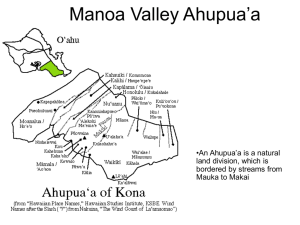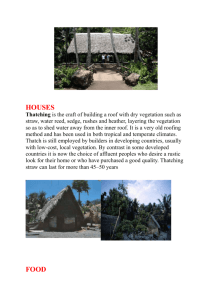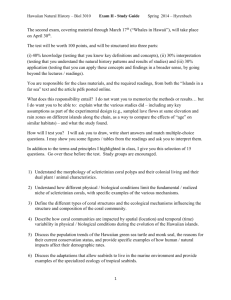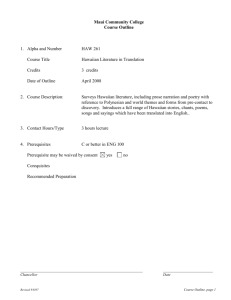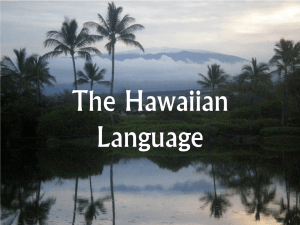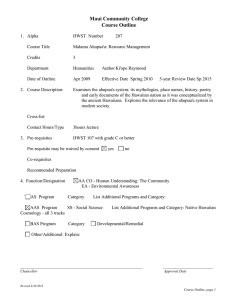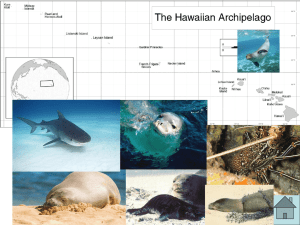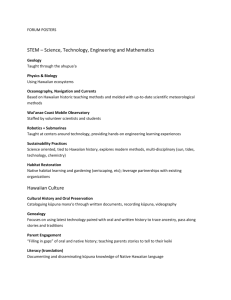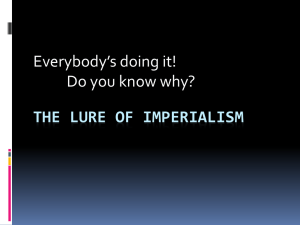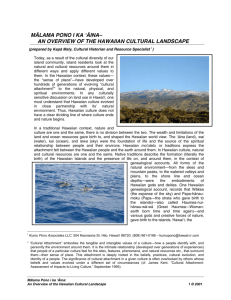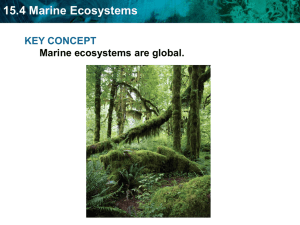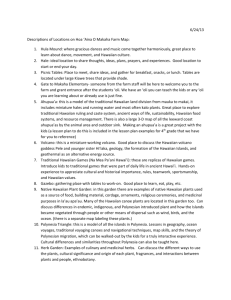Document
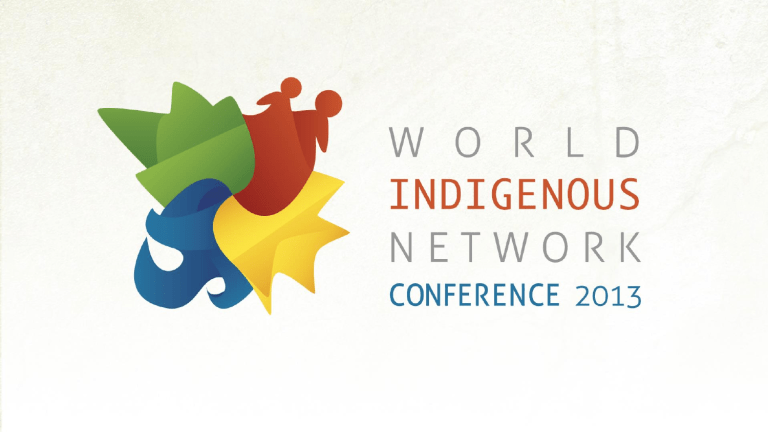
Trisha Kehaulani Watson, JD,
PhD
Aloha ‘Āina: A Framework for
Managing Biocultural Resources in
Hawai‘i’s Anthroprogenic Ecosystems
Aloha ‘Āina Management Framework
• Based on the traditional ecopolitical structure of Ma‘ilikūkahi
– Created in the 6 th century to address land management needs and political disarray
– Developed ahupua‘a system
• Created management around sustainable systems
• Decentralized power to the families and communities
• Based on traditional ecological knowledge (western scientific methods – hypotheses -> trial and error)
Ahupua‘a System
Application of ahupua‘a system to modern day biocultural resource management in anthroprogenic ecosystems
• Localized action
• Questions and issues are collaboratively identified
• Research is collaborative (i.e., collection of “best information available”)
• Western and indigenous science foundation -> community and “peer reviewed” data validation
• Communities are engaged and empowered as partners in implementation and stewardship activities
• Community and leadership capacity building among Native partners
“Best Information Available” / Research Framework
Traditional Ecological Knowledge is good science (BMP):
Changes in Anthroprogenic Footprints
Basic Elements of Management Framework
• Moves focus from “consultation” to improving “best information available”
• Role of community and traditional knowledge occurs throughout process
• Community is also used for ground-truth information
• Integrated knowledge is used to develop BMPs
• Process is cyclical
Case Study: Recovery of Hawaiian Monk Seals
Lack of Community Results in Conflict
• Data collective for decision making was made vacuously
• “Public hearing” process used for consultation, which generated mistrust and resentment
• “Outsider” data rejected by community
• Recovery community built with newcomers (“outsiders”) to island community, resulting in community conflict
• Increased federal actions seen as increased federalized of resources
Case Study: Traditional Hawaiian Fishponds
Traditional Hawaiian Fishpond Restoration
• Permitting Problems
• Fishponds continuously destroyed by development
• Meetings held to identify problem with community
• Honua Consulting hired to consult on project
– Community input
– Lead interagency team
– Led research and program development
Traditional Hawaiian Fishponds
Traditional Hawaiian Fishponds
Traditional Hawaiian Fishponds
Case Study: Marine Mammal Research and Recovery
Marine Mammal Recovery
• Originating conflict (finding the right community partner(s))
• Returning to community to obtain data and identify needs and common questions
• Integrating research and community needs
– Marine mammals as sentinels of ocean health
– Important educational tools
– Sources of cultural pride and empowerment
Critical Take-Aways and Ways Forward
• As economies continue to struggle and biocultural resource needs continue to increase, community partnerships are necessary to successes in protection and recovery
• Governments and agencies must begin to recognize resources as being “biocultural” and develop integrated processes, research plans and management plans accordingly
• If you want to restore ecosystems to their pre-contact status, you need pre-contact knowledge
• The private sector is the real “front line” (more native peoples are needed among developers, consultants and planners)
• Native peoples need to push forward on education and leadership capacity building (and placement)
Mahalo!
www.honuaconsulting.com
watson@honuaconsulting.com
